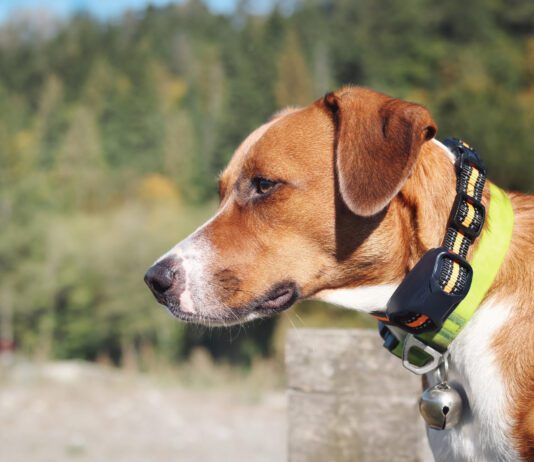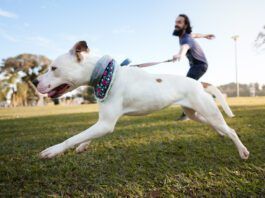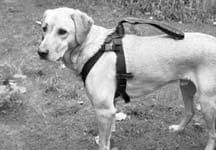Safest Canine Seat Belts
Your kids always buckle up, and you usually do. It's time to take the next step, and get that dog a seat belt. We'll tell you which one is a winner.
Tethering Your Dog for Training
For many years, I have been a vigorous and vocal opponent of keeping dogs tied or chained as a primary means of confinement. The hazards of tying a dog are well-documented, and include increased aggression, vulerability to human and non-human intruders, and the risk of hanging or choking. It may come as a surprise, therefore, to know that I regard the tether as an invaluable piece of training equipment. The difference and it's a big one is in the application.
Proper Use of Head Halters for Leash Training
Ten years ago, a new dog training tool hit the market. Known generically as the head halter (or head collar), it is a device similar to the halter commonly used on horses. It provides a greatly increased degree of control over the dog who is dedicated to pulling on the collar and leash, without the punishment or pain factors associated with choke chains and prong collars. The head halter has a strap that goes around the dog’s nose, and another that clasps around his neck, just behind the ears. The leash attaches to a ring below the dog’s chin. Just like with halters on horses, bulls and other large animals, it works on the principle that where the nose goes, the body must follow.
Limited Slip Collars: Best for Dog Training and Restraint
We put collars on our dogs for several reasons. Collars give us a convenient place to hang ID tags and licenses very important for a dog's health and safety should he ever get lost. They make a convenient handle when we need to restrain our dog for some reason for safety, training, or to comply with leash laws or social convention. Finally, in some cases, collars are used as training tools, to reinforce cues to a dog; this is a compulsion-based application, not generally used in positive training. In this article, we'e looking at dog collars primarily as a restraint tool, especially as a means to keep our dogs from slip-sliding away.
Much Ado About Muzzles
Let’s be clear about one thing right from the start. A muzzle won’t train your dog. It will not teach your dog to stop biting or chewing, nor will it teach him to love small children, tall men with beards, hats and umbrellas, or your veterinarian. A muzzle is a behavior management tool, properly used as a temporary measure to protect humans (or other dogs) when dogs have to be handled in situations that are too stressful for them to tolerate. A muzzle is also a flashing neon warning sign that it’s time to do some serious counter-conditioning and desensitization so the dog in question can be handled in normal situations without resorting to muzzling.
Dogs Who Are Harness Escape Artists
My dog, Bear, has developed extreme cunning in getting out of whatever device I have on him buckle collar, body harness (two different styles), Halti head halter or any combination of these. The only time he was unable to free himself was when the buckle collar was too tight for safety or comfort. Bear's strategy appears to be to face me, pull backwards, and hop around on his back legs until he pops out of his restraint. Even with the belly band of his harness on tight, he managed to wiggle his elbows through it and pull out backwards.










